Border Sound Files: Excerpts from an Audio Essay
Into Tijuana, through the aural aleph
Josh Kun
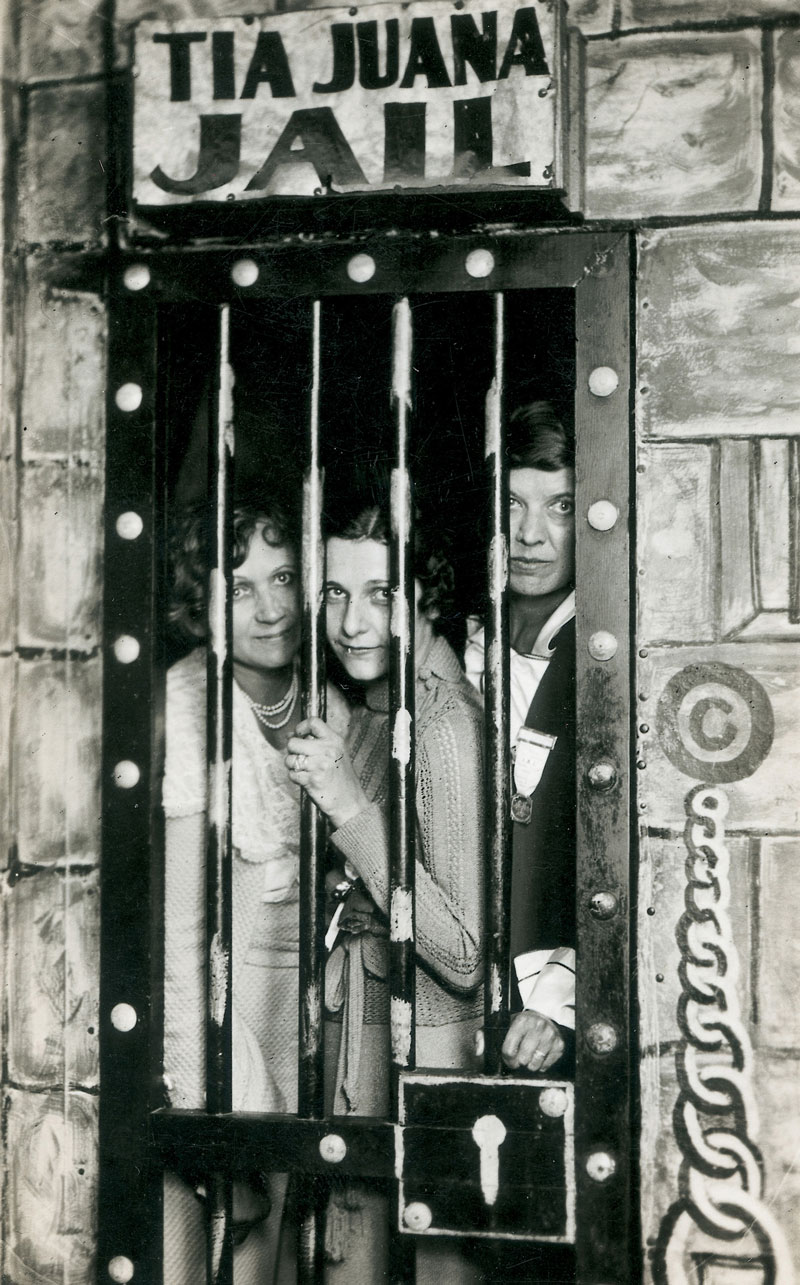
[Track 2: Play opening forty-five seconds of Zoo Sonico, “Speed Trip,” then fade down and continue playing on low volume.]
The more times I do this, the less I see what’s all around me—vendors selling leather back cushions, men in white suits holding white church collection buckets, fading reward posters for the murderous Arellano-Felix narco brothers who only two years ago woke twenty-one Pai-Pai Indians from their beds in Ensenada and opened fire on them and who only eight years ago recruited members of San Diego’s Thirteenth Street gang to gun down Cardinal Ocampo—and the more I hear what’s all around me, the barked pitches, the alms pleas, the rattling mufflers, the radio crossing reports that bounce out of rolled-down windows. “Fifty cars in lane one. Sixty cars in lane two. Forty cars in lane three.” It’s a soundscape like no other, a sonic symphony of banda and Sum 41, Los Panchos and Avril Lavigne, conducted by globalization’s invisible nine-to-five crunch and played with determination by urban rancheros in shining Ford Rangers, import/export assistants on their way to San Diego offices, gringos in college sweatshirts heading home after mountain biking in Ensenada, and Tijuana mothers on their way to JC Penney in Chula Vista.
Local Tijuanenses have a name for all this. Before getting in their cars to cross, they turn on the radio para escuchar la linea. To listen to the line.
When I finally pull up to the border patrol agents, they search the car, probing between the seams of the seats and emptying my trunk. I know if I look at them I will look guilty of something that I have not done. So instead I just keep my eyes on the bend of road ahead and keep listening to a future that’s already happening.
[Fade track 2 back up for thirty seconds, then fade out.]
An aleph, Borges is told in the 1945 parable in which he describes it, “is one of the points in space containing all points, ... the place where, without any possible confusion, all the places in the world are found, seen from every angle.” When Borges goes over to the house to see the aleph first hand, he lacks language to describe what he sees within its two to three centimeters of diameter—the vocabularies do not exist, there is no discipline of knowledge to which the aleph belongs that could effectively express the enormity of the convergence, the boundless cosmic space of overlapping realities, that Borges witnessed in Argentino’s cellar. “I saw millions of delightful and atrocious acts,” he wrote, “none astonished me more than the fact that all of them together occupied the same point, without super-position and without transparency.”
In 1974, the French writer Georges Perec wrote a book called Species of Spaces and in the middle of it, rather suddenly, he asked: “Is the aleph, that place in Borges from which the entire world is visible, anything other than an alphabet?”
What if Borges were still alive? What if Carlos Argentino was living in Tijuana or Nogales or Juarez or Mexicali and what if his house was about to be torn down to make room for a maquiladora or if his cellar was being gradually destroyed by moist earth contaminated with toxic runoff from a nearby smelting plant? And what if Borges went over to see the aleph but instead of finding it in the cellar and instead of finding it in the alphabet, he finds it by looking out of Argentino’s window, out at the world created by a line drawn in the sand and then redraw with wire fences and then redrawn with steel walls and then redrawn with steel walls wired with electronic sensors and digital cameras? And since ocular vision was not the usual way that Borges saw the world, what if instead of seeing the convergences of all points in space, he heard them?
Is the aleph, that place in Borges from which the entire world is audible, anything other than the border? As Borges reminds us, the aleph is the first letter of the Hebrew alphabet and in the Jewish mystical text of the kabbalah, the aleph is ein-sof, “limitless and pure divinity.” Near the San Ysidro-Tijuana crossing point, on the Mexican side, there is a large piece of quarry stone meant to mark the border line. It reads “Limite de La Republica de Mexico.” The border, the limit without limits, el limite sin limite.
[Track 3: Play Control Machete, “Te Aprovechas de Limite?” and fade out at 0:22.]
[Track 4: Play Henry Mancini, “Touch of Evil: Main Title.” Fade up at 0:36 and fade out at 1:19.]
When they did it again in 1998, you heard a lot more. Now Los Robles didn’t just have a soundtrack, it produced sound, and not a single sweep of sound but a piecemeal montage of sound that moved from style to style as Heston and Leigh moved from border space to border space. Now the car bomb ticked between mambo-mutated conga hiccups and braying goats, and now each bar that Vargas and his new white bride walked past had its own music: swinging jazz out of one doorway, dragging dirty blues out of another.
The difference was crucial, not just for how much better it got the reality of border sound—a polyphonic crossroads of channel-zapped north and south, folklorico and pop, city and country—but for how much closer it stuck to the original vision of the film’s director, Orson Welles. Back in 1957, the studio took control of the picture away from Welles and edited the final cut themselves without his supervision. When he saw the studio cut—the same cut which debuted in theaters the following year and that has been the Touch of Evil that generations of film audiences have known—he was so outraged that he wrote a fifty-eight-page memo detailing the changes he wanted to be made. Chief among them was the removal of Henry Mancini’s symphonic “Main Title” score. Nobody listened.
Forty years later, the film was recut to answer Welles’s lengthy edit memo by expert sound engineer Walter Murch. Murch found not only Welles’s original source but “a hidden layer of sound effects … allowing the audience to hear the town, the footsteps of the pedestrians, their voices, the laughter of the crowds, the sirens—even the bleating of a pack of goats stuck in the middle of the road.”
[Track 5: Play Walter Murch edit, “Touch of Evil: Main Title” and fade out at 0:38.]
“The plan was to feature a succession of different and contrasting musical numbers,” Welles wrote in the memo. “In honky-tonk districts on the border, loudspeakers are over the entrance of every joint, large or small, each blasting out its own tune by way of a ‘come on’ or a ‘pitch’ for the tourists. The fact that the streets of these border towns are invariably loud with this music was planned as a basic device throughout the picture.” Welles wanted “mambo-type rhythm numbers with rock-and-roll” because he had listened to the border long enough to know that the border is where sound is restless, not where it rests. By 1958, mambo had already hit the United States after being cultivated by Perez Prado in Mexico City and rock-and-roll had already hit Tijuana with bands like Los Locos del Ritmo and Los Rockin Devils. Welles understood that the border between Los Robles and the United States—a border inspired by the one that separates Tijuana from San Ysidro—was a space of sonic multiplicity where rock bumps up against mambo, blues interrupts Latin jazz, and Murch never stops cutting the sounds against and into each other as long as Vargas and his bride keep moving.
There is one sound that remains constant—the sound of the radio in the car, the car that will by the end of the three minutes and twenty seconds, explode, its sound turning the heads of Heston and Leigh, its sound the one that keeps bringing both sides of the border together for the rest of the film.
But a cut-up of Touch of Evil’s original sound source actually surfaced before Murch’s 1998 re-edit, at the hands of perhaps a less likely suspect, the Chicano rapper and producer Frost. A year before Murch recut the opening score, Frost was busy sampling dialogue from the film’s story of a corrupt US cop working in conjunction with a local drug cartel. The song the sample appears on is “Mexican Border” and it details the exploits of a young East LA drug dealer who sells drugs smuggled from Mexico in his Southern California neighborhood. In the song, he is on his way down to the Mexican border to pick up his latest shipment from Sinaloa when he is stopped by a cop for speeding. The cop ends up dead, and the dealer keeps heading south down I-5 in a Chevrolet. As he passes through Oceanside and gets close to San Ysidro, he channels the voice of narco boss Uncle Joe Grandi (played by Russian actor Akim Tamiroff) as he threatens the life of Mike Vargas, the saintly Mexican cop with a white fiancée who will eventually bring Grandi to his knees.
[Track 6: Play Frost, “Mexican Border.” Fade up at 2:40 and fade out at 3:05.]
The border of Touch of Evil is the border of Hollywood archetype, a place of sin and corruption, of fortune tellers and prostitutes, where the Puritanical values of the North have no authority once they cross the line. “Tijuana is nothing,” Raymond Chandler made Phillip Marlowe say in The Long Goodbye, “All they want there is the buck. The kid who sidles over to your car and looks at you with big wistful eyes and says, One Dime Please Mister, will try to sell you his sister in the next sentence.”
It is the border that every Hollywood outlaw and criminal wants to make a run for, its lawlessness—the last frontier that US lawmen could not cross—a sanctuary for those living outside the law. One of Hollywood’s earliest productions, Charlie Chaplin’s 1923 The Pilgrim, ends with Chaplin—a thief on the run from the law—straddling the Texas-Mexico borderline, with one foot in the land of the law and the other in the land where law no longer applies. In 1971, Sweet Sweetback headed for Tijuana at the finale of his Baad Asssss Song with police dogs barking at his feet, and in 2003, Charlie’s Angel Drew Barrymore fled her assassin ex-boyfriend by hiding out in a Tijuana dive, even though it was really a hipster margarita bar in West Hollywood.
The dealer in Frost’s song is just another of these on-the-run outlaws headed south for safety, “headin’ down to the Mexican border,” but Frost’s dealer is not a white outcast on the lam, a white preppy looking for cheap sex, or a neo-Beat bohemian searching for illicit anti-authoritarian kicks. The dealer is Chicano and he’s looking across the border not just for refuge but for a role model. He’s looking to be the next Joe Grandi.
On the cover of the album Frost’s song appears on, When Hell LA Freezes Over, he’s standing in white camouflage in front of a silver military Humvee. Behind him, only ten minutes from the Venice Beach back lot that doubled as Touch of Evil’s Los Robles, is downtown Los Angeles, the original center of what was once Mexican Los Angeles, before there was a border, before there was any line between Los Robles and the other side, before there was any line that you had to walk across.
[Track 7: Play Charles Mingus, “Tijuana Gift Shop,” and fade out at 0:50.]
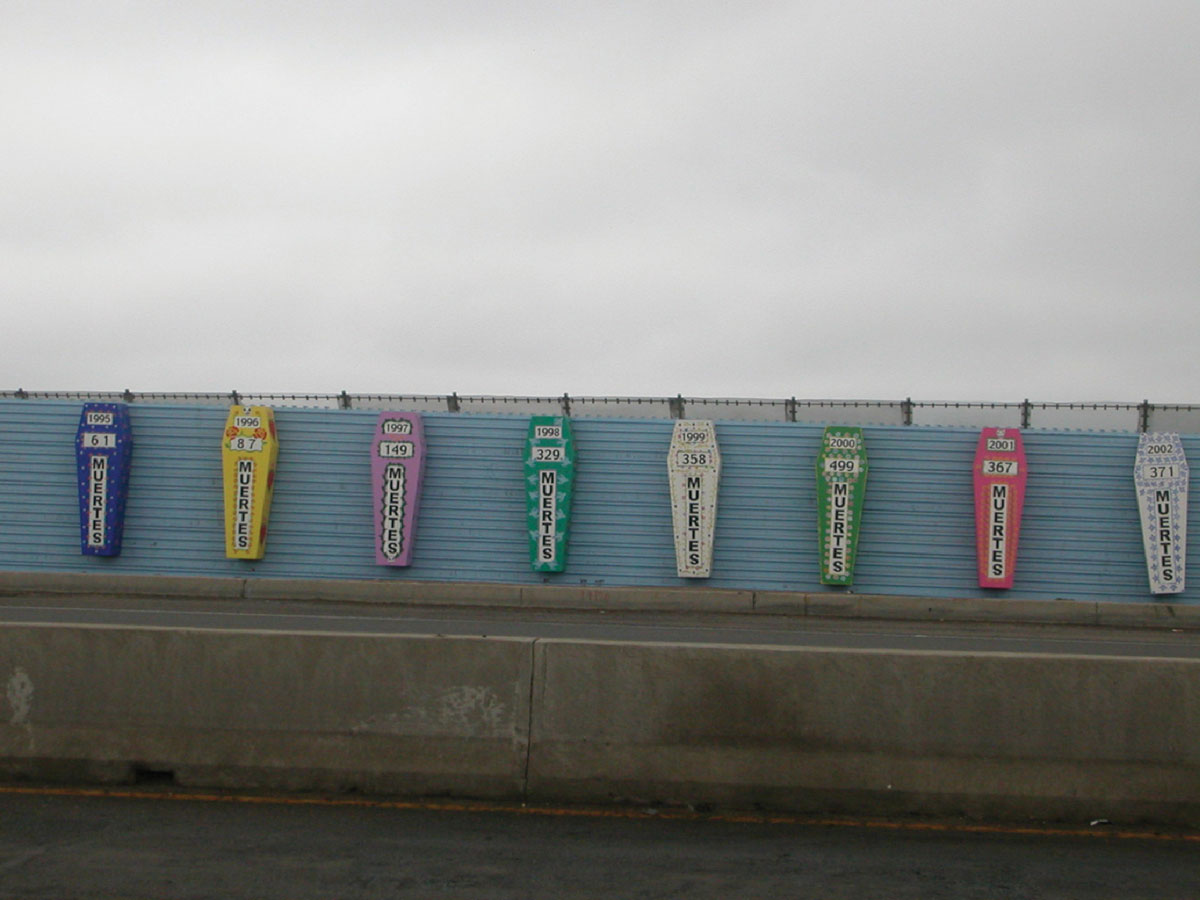
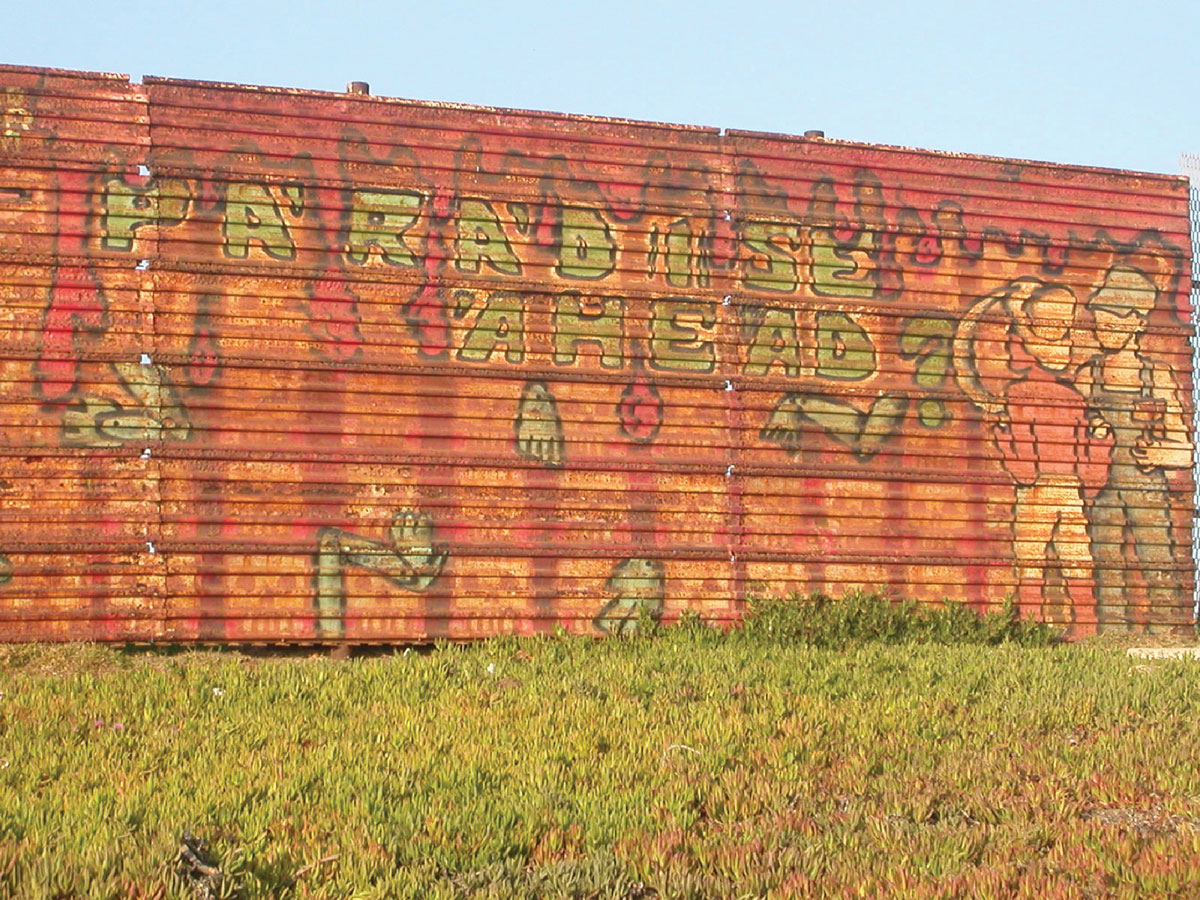
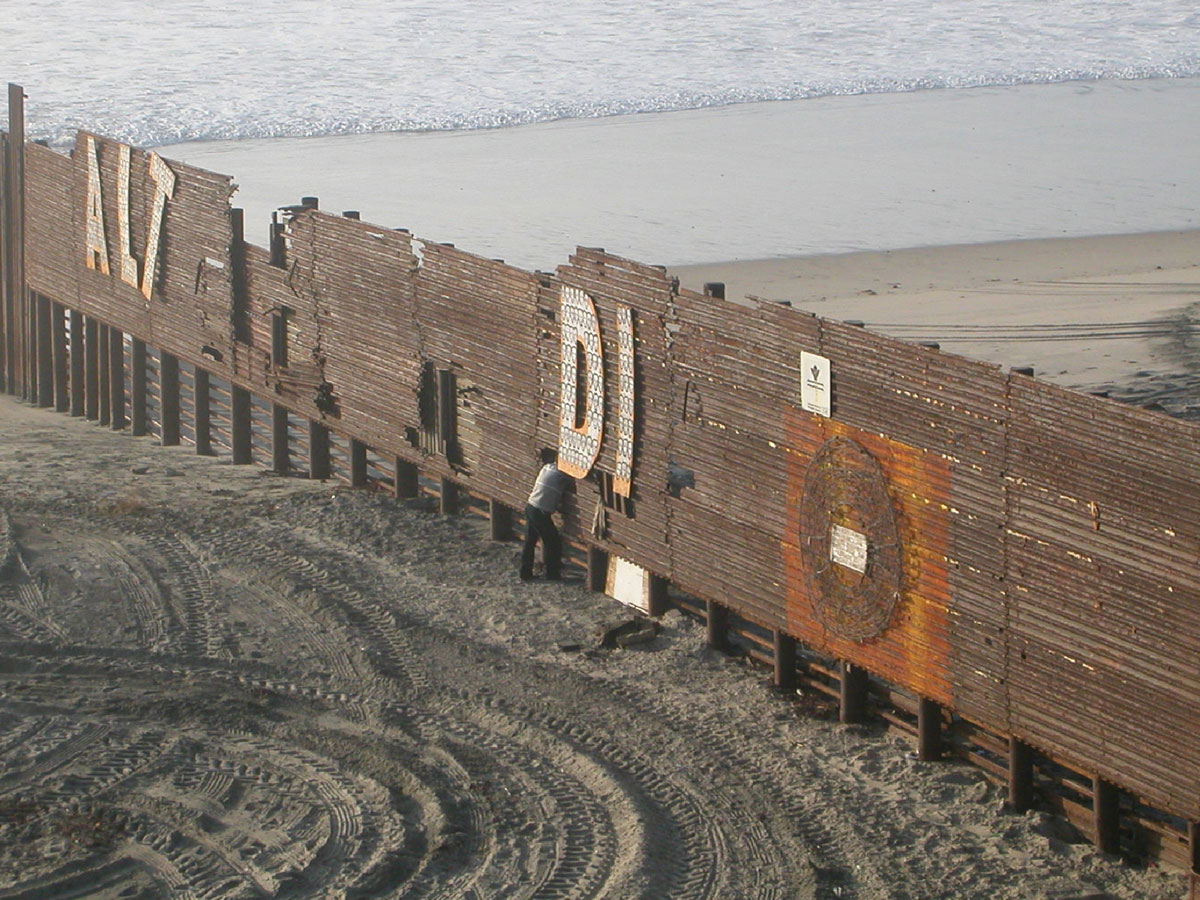
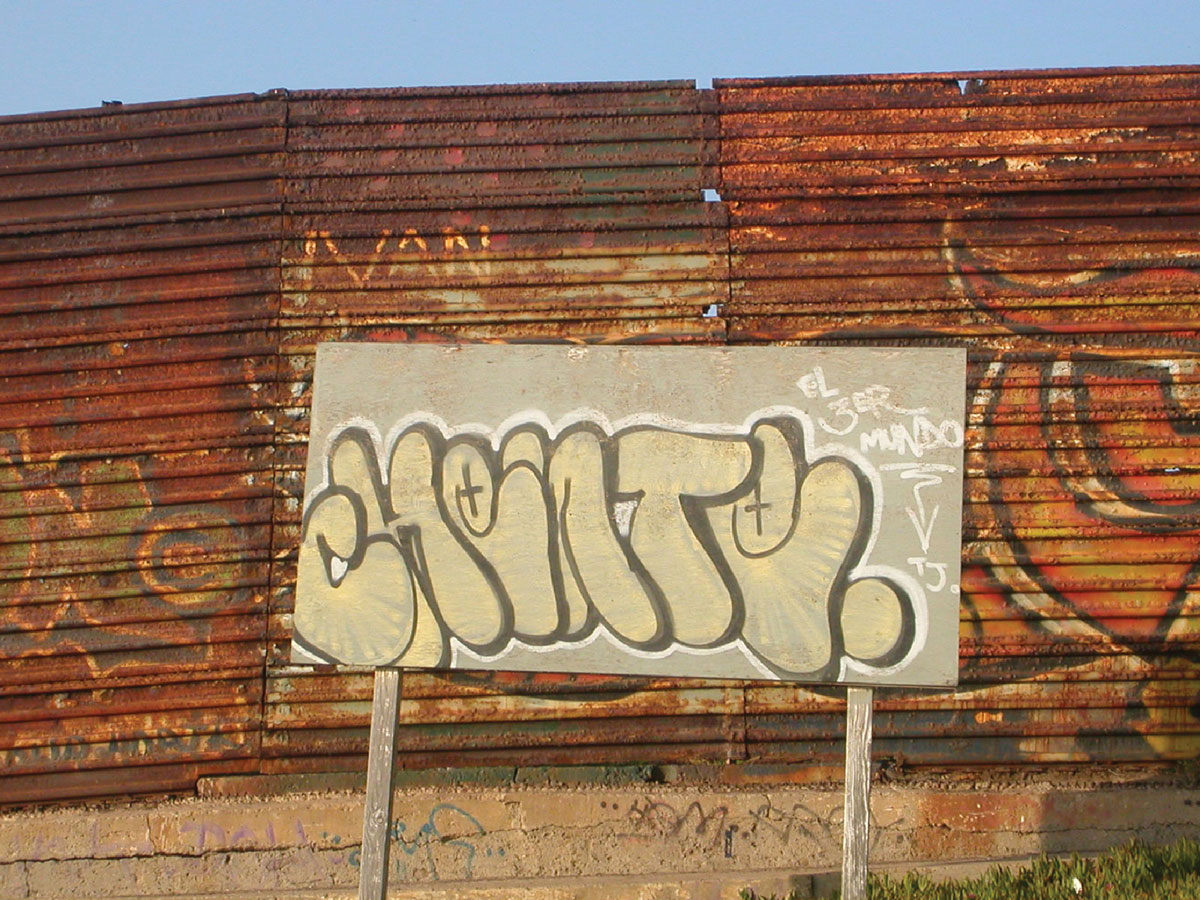
With Mingus, the fiction of experience was more important than the fact of it; after all, this is a guy who originally wanted Beneath to be bound in white leather and titled “Holy Bible.” The fictions of his Tijuana adventure led to the fact of Tijuana Moods, an entire album (his first stereo recording, and his first for a major label) that celebrates the Tijuana that only exists in the collective imagination of North American mythology.
Tijuana. Our pueblo of donkey shows and gambling houses. Our pueblo of twenty-four-hour sin and self-serve salvation. Our pueblo of Protestant release and Mexican divorce.
Like Mingus’s sexcapades, the Tijuana of legend and lore is itself a composite of fact and fiction—a city that only began to register in the US brain during Prohibition, when its Agua Caliente casino became a fave playground for party-starved Hollywooders and bars on La Revo were the only places you could get a decent drink in public.
The cover of Tijuana Moods describes the album’s task as recreating “an exciting stay in Mexico’s wild and controversial border town.” In the liner notes, Mingus gushes about the city’s “wine-women-song-and-dance.” The songs splice castanets, free improv, and rolling blues into odes to strippers (“Ysabel’s Table Dance”), cheap souvenirs (“Tijuana Gift Shop”), nightclubs (“Flamingo”), and nomadic mariachis (“Los Mariachis [The Street Musicians]”). And on the cover, a Mexican prostitute in a tacky brothel gown flashes her black garter, drags on a cigarette, and leans, come-hither style, against a jukebox.
In his biography of Mingus, music critic Gene Santoro explains Mingus’s obsession with this mythic Tijuana as just another example of northern bohos looking for sexual salvation in the brown otherness of Mexico. Which is certainly true but it’s not enough, because Tijuana and Mexico were also more than that for Mingus. They were key places for this self-avowed “mongrel” to both figure out and escape the entrapping, often suffocating racial binaries of civil rights America.
Mingus was born on the border (in Nogales) and died, of Lou Gehrig’s disease, in Cuernavaca (where he had been living in the care of a Mexican healer). He grew up in Watts going to school with and dating Mexican kids and had family in New Mexico who spoke Spanish. His mother’s “Indian features” often led to her being mistaken for Mexican, and Mingus himself passed to get admitted into the Musicians’ Union. Mingus was too black to be white and too light to be black.
“He wanted to be one or the other,” Mingus wrote of himself, “but he was a little of everything, wholly nothing, of no race, country, flag, or friend.” Mingus was beaten up by blacks for looking Mexican and beaten up by Mexicans for being black.
Mingus loved his make-believe Tijuana, his “expected dream” of it, because it gave him a way out of all this. It was the archetypal border town and Mingus spent his life struggling with the borders of race (so much so that he often said he wanted to retreat to “a colorless island”). Tijuana was somewhere where all these designations fell apart, somewhere that wasn’t the US, where the freedom he was promised hadn’t already soured into the “bullschitt freedom” he decried up north. Tijuana was somewhere he could figure out, however violently, however destructively, his relationship to himself.
Mingus left a legacy there. His son, Eugene, lived there for awhile, working as a manager and occasional sound man for the punk band Tijuana NO, whose recent album Contra Revolución Avenue set out to overturn all the Tijuana myths that Mingus needed to make true in order to survive. Last year, a young Tijuana poet named Miguel Angel Soria and two African-American jazz musicians from San Diego put their ear to the Tijuana-San Diego border zone and heard its geography through the thick steel plucks of Mingus’s bass.
[Track 8: Play Miguel Angel Soria, “Geografia Con Mingus.” Fade in at 2:33 and fade out at 3:27.]
One of the more notorious non-musical moving images of Mingus comes from the 1968 documentary Mingus which captured him in the middle of being evicted from his New York City loft. He is smoking a pipe and wearing a sombrero, and then he fires his shotgun into the ceiling that closes in on him.
Let my children hear Mingus.
Permite que mis niños escuchen a Mingus,
a Mingus,
desde Cuernavaca a Los Angeles,
desde Los Angeles a Tijuana,
permite que mis niños escuchen a Mingus.
[Track 9: Play Kingston Trio, “Tijuana Jail,” and fade out at 0:52.]
There is nothing dated about the Kingston Trio’s jail fantasy. Its mythologization of Tijuana criminality and Anglo debauchery remains very contemporary. For starters, the 1983 film Losin’ It, starring a young Tom Cruise, basically built its script from the plot of the song. The “it” was Cruise’s virginity and the process of its loss began with shots of him and his buddies flexing their adolescent muscles and stuffing their underwear in front of the mirror. “Hey, where you going?” a cheerleader asks the guys, and they respond, “to the nastiest, raunchiest, most bitchinist place in the world ... Tia Juana!”
As they cross the checkpoint, the sound mix goes from Eddie Conchran’s “Summertime Blues” to The Champs’ “Tequila” until they end up in a strip club with an ex-pat gringo on stage leading a strip revue. “Tia Juana!” he shouts. “Tia Juana who?” the crowd shouts back, “Tia Juana bring your mother to the gang bang.” By night’s end, after a donkey show and a bar fight, one of them gets thrown in the Kingston Trio jail.
The Tijuana Jail has also been recreated as a room in the FantaSuites theme-hotel chain, which allows paying customers the chance to spend a night alone in a mock jail cell complete with stone walls covered in graffiti, a queen bed hanging from the ceiling by chains, and a copy of the Kingston Trio on the stereo.
When Herb Alpert, a young Russian-Jewish trumpet player from Boyle Heights who had cut his teeth writing hits for Sam Cooke, went down to Tijuana in 1962, he ended up in a Tijuana bullring. Alpert had been working on an instrumental, “Twinkle Star,” and hit a wall. So he went to the bullring for inspiration, came back to Los Angeles with on-site recordings of crowd noise, and recorded his first solo hit “The Lonely Bull” with a group of LA session players. He named them The Tijuana Brass, but they were really “four salamis, two bagels, and an American cheese” who were out to Americanize the sound of Mexican mariachis. “Something in the excitement of the crowd, the traditional mariachi music, the trumpet call heralding the start of the fight, the yelling, the snorting of bulls,” Alpert said, “it all clicked.”
[Track 10: Play Herb Alpert, “The Lonely Bull,” and fade out at 0:40.]
The song was the title track to Alpert and the Tijuana Brass’ debut recording which, according to the album’s liner notes, was meant to capture the sound of a mythologized Tijuana, “the noisy Mexican-American voices in the narrow streets, the confusion of color and motion.” On the back cover he called Tijuana “a spectacle, a garish border town” and on the front cover sat in a cardigan and loafers doing tequila shots out of a pewter cup. The San Francisco Chronicle called Alpert’s project “a corny Latin American minstrel show.”
Both Alpert and The Kingston Trio, with their jails and casinos and bullrings, gave us the quintessential US version of Tijuana, and it was literally a US version, the tourist Tijuana built and financed by white American businessmen during Prohibition to meet the pleasure needs of gringos with money to spend, a Tijuana run by Americans for Americans, the Tijuana of race tracks and the Agua Caliente casino, the Tijuana of Sin City, the Tijuana that has never actually existed except when it was created by US money, the Calcutta of the West with its donkey shows and johns pimping their sisters to Navy men on weekend shore leave, the Tijuana where everything is cheaper, everything more transgressive—the licentious evil twin of its conservative sibling that lurks one border fence, one border wall, and a fleet of migra trucks to the north. As one Tijuanense put it in a local study on tourism, “Tijuana was the emporium where gold from gaming tables spilled onto the floors but gringos took it home; for Tijuana, there was only its shame.” The Tijuana of Alpert and the Kingston Trio, besides being one built on layers of North-on-South myth and fantasy, is the Tijuana forced to subsist at the mercy of the false trickle-down economic promises of a tourist economy that—not unlike the maquiladora economy of globalization that would later follow it—leaves Tijuana residents picking up the tab for US prosperity.
The bullring and the jail are still there, but even if they weren’t, people north of the border would still find a way to visit them.
[Track 11: Play Fussible, “Rom u Rosa,” and fade out to silence at 0:45.]
Josh Kun is a Los Angeles–based writer who teaches in the English Department at UC Riverside. His arts column, “Frequencies,” appears in the San Francisco Bay Guardian, Boston Phoenix, and Los Angeles Alternative Press. He is currently writing a book about Tijuana.
Spotted an error? Email us at corrections at cabinetmagazine dot org.
If you’ve enjoyed the free articles that we offer on our site, please consider subscribing to our nonprofit magazine. You get twelve online issues and unlimited access to all our archives.